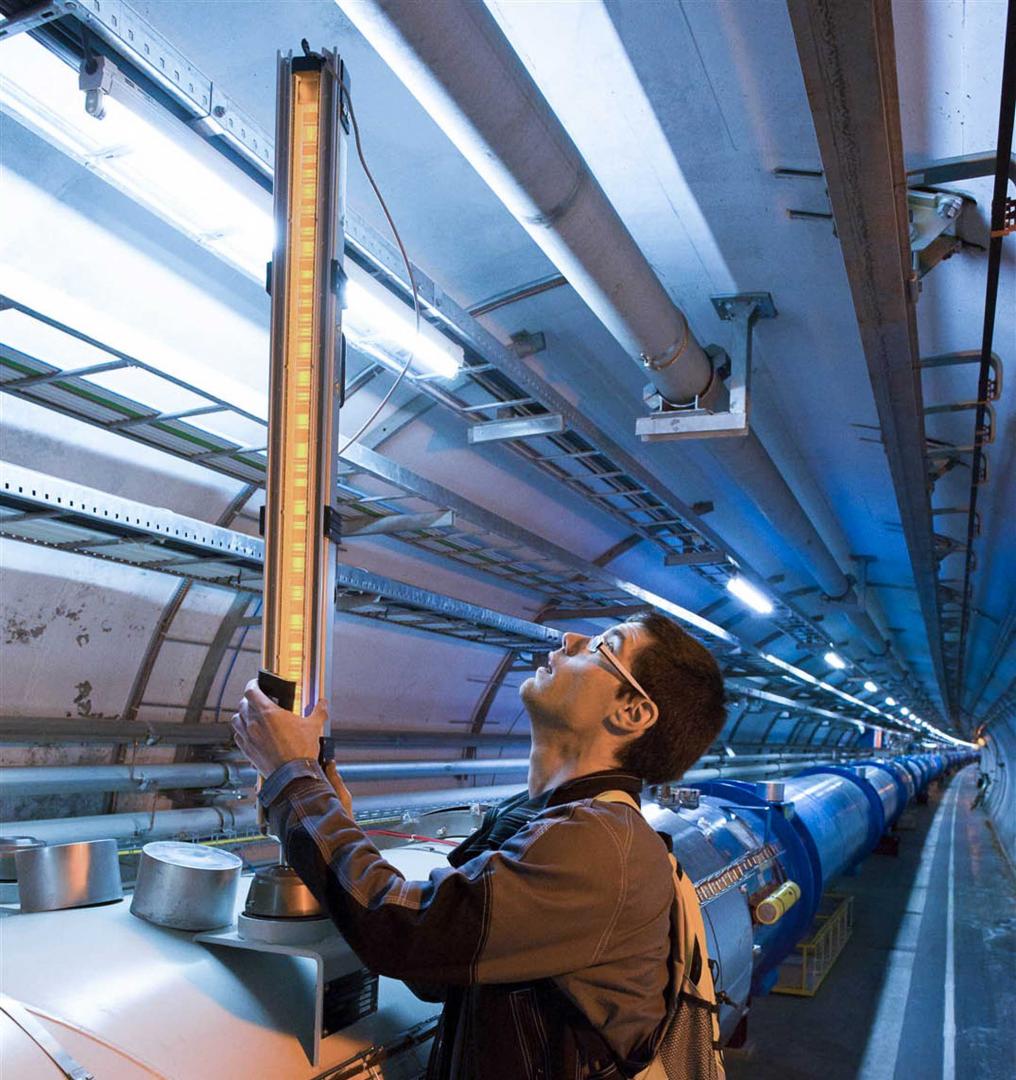The Large Hadron Collider (LHC) tunnel is renowned for its geological stability: set between layers of sandstone and molasse, it has allowed the world’s largest accelerators to run to sub-millimetre precision. But even the most stable of tunnels can be affected by geological events. To ensure the precise alignment of the LHC, the CERN survey team performs regular measurements of the vertical position of the magnets (a process known as “levelling”).
The team has taken measurements of the LHC before its temperature reached 100 kelvin, beyond which there may be some mechanical movements. As no data could be gathered while the machine was in operation, these measurements will provide the clearest picture yet of the accelerator's position at the end of its run. The team used a so-called “fast levelling” technique, which involves measuring every second magnet in order to complete the survey as quickly as possible and to reduce the influence of the environmental conditions that could affect the observations made with an optical level. Technicians were able not only to measure the height of the magnets but also to make immediate height comparisons with the previous magnets. No magnet realignments were carried out at this stage.
“By comparing these measurements with the base measurements taken during the 2008-2009 shutdown, we will soon have an accurate picture of how ground disturbances may have affected the machine,” says Dominique Missiaen, leader of the Beams department section responsible for large-scale metrology. “This comparison will also help us predict possible future deviations and deterioration of the relative positions between magnets.”
The next series of levelling measurements will be taken at the end of the first long shutdown, once the work on the LHC interconnects has been completed. Technicians will then perform complete levelling measurements of the machine, measuring every LHC magnet and adjusting the magnet heights when they see significant variations. “The main aim of this levelling is not to have perfect measurements of the height of the machine, but rather to have an accurate evaluation of each magnet with respect to its neighbours,” says Missiaen. “We will ensure the magnets are all smoothly aligned for the restart of the machine, as even the smallest of differences can affect the beam orbit.”

